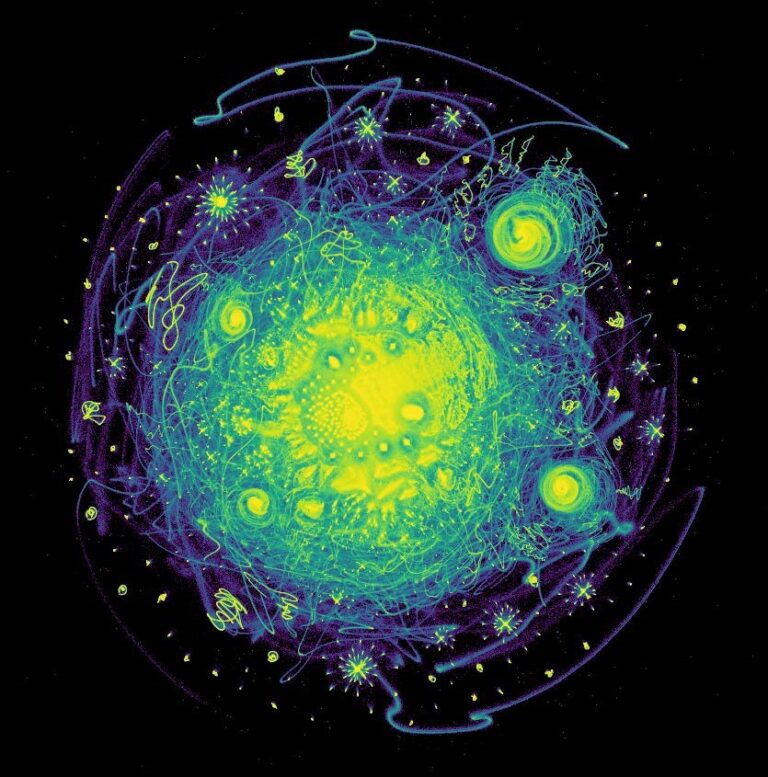
I was entertained by motivational lectures from Simon Sinek to corporate philosophy from McKinsey. All this served to make me begin to suspect that there was something important in asking why we do what we do. However, it was only after a while, when we had already done many projects and started to face some problems that we really took it seriously. For example, ethical dilemmas, what are the risks of using artificial intelligence for social impact, should we do algorithmic trading, work for political campaigns, do projects in the hydrocarbon sector, etc. In addition, we were faced with the need to design a corporate strategy that would allow us to focus and identify our north as a company, Should we open a geographic data unit?, Logistics?, Algorithmic auditing?, etc. This introspective analysis led us to the following and its only objective was to find a guide to answer more general questions such as: What to do?, What not to do?, How to do it?, With whom?, etc.
On the beauty of mathematics, there is no better summary than the following text by Bertrand Russell (Study of Mathematics):
“Mathematics, rightly viewed, possesses not only truth, but supreme beauty, a
beauty cold and austere, like that of sculpture, without appeal to any part of our
weaker nature, without the gorgeous trappings of painting or music, yet sublimely
pure, and capable of a stern perfection such as only the greatest art can show. The
true spirit of delight, the exaltation, the sense of being more than Man, which is the
touchstone of the highest excellence, is to be found in mathematics as surely as in
poetry.”

The Beauty of Mathematics. The first 30,000 natural numbers after: (1) Encoding each number in a multidimensional space where the components of each vector represent prime numbers and the vector has zeros and ones depending on whether the prime number is divisor or not of the natural number. (2) Representation in two dimensions after using the Uniform Manifold Approximation and Projection (UMAP)dimension reduction method. The colors represent the density of the points. Taken from Leland McInnes and John Healy and James Melville (2020)
But beyond an aesthetic appreciation, mathematics is incredibly effective in understanding the universe (the quintessential reading on this subject is: The Unreasonable Effectiveness of Mathematics in the Natural Sciences). Some recent texts are very telling about the scope, state and future of mathematics and are worth a look just to feel a bit of contagion and enthusiasm:
In particular, note in the latter the increasing intersection of the relationship of mathematics with the social sciences, computation and data science (see Chapter 3, Connections Between the Mathematical Sciences and Other Fields).
But if this is not enough motivation, we can fall back on our individual preferences or, perhaps, more basic instincts. We do it for the pleasure of discovering mathematics everywhere, or as André Weil would say, quoted by Cedric Villani,"Mathematics is like sexual pleasure, orgasm, only lasting longer ”.
We do mathematics to make a positive impact on society
Quantil

This vision of our purpose focused on what it means to do mathematics has the virtue of encompassing all the activities of mathematics: applications, research, outreach, teaching, and so on. Indeed, this vision encompasses the mathematics-related activities of a university, focused on teaching and research, and those of a company with any objective based on the application of mathematics to industrial problems. Then, we believe that doing mathematics suggests a broad and deep relationship with the world and with mathematics, it is an activity that contributes to human flourishing (Su, F. 2020. Mathematics for Human Flourishing).
This philosophical part is the most beautiful and is like a spiritual guide for the company. But now we have to ground it a bit, which is what we are going to do in the next section
The roadmap is basically what we want to do as the core of our activity. It is that list of activities that have been prioritized over the years and may change, it reflects time preferences, but it should be aligned with our purpose. We don't say how it's going to be done, but it does ground the purpose a bit into more specific things we would like to do (this is the "what"). How we are going to do it is the strategy of the company and we are not going to describe it in this Blog.
By organization and to facilitate internal and external communication, we divide them into Company (governance, products, services, etc.), Culture (work environment, employee welfare), Social (relationship with Society) and Environmental activities. What is key is that all these activities are oriented to directly or indirectly fulfill the company's purpose.
Company
Culture
Social
In this pillar of the roadmap, the idea is to focus mainly on impacting Society with what we know how to do, mathematics. This is motivated by the concept of Porter and Kramer (2011): Shared Value.
Environment
With this roadmap, which will surely guide us for the next five years, we defined a strategy to advance each of these pillars. This strategy, which we will not discuss here, is more boring but very necessary, something we understood only after doing mathematics for 15 years.
*Note: The content of this Blog has a strong personal bias. The opinions expressed do not necessarily reflect the opinions of the other partners of Quantil or its Advisory Board.
Get information about Data Science, Artificial Intelligence, Machine Learning and more.
In the Blog articles, you will find the latest news, publications, studies and articles of current interest.